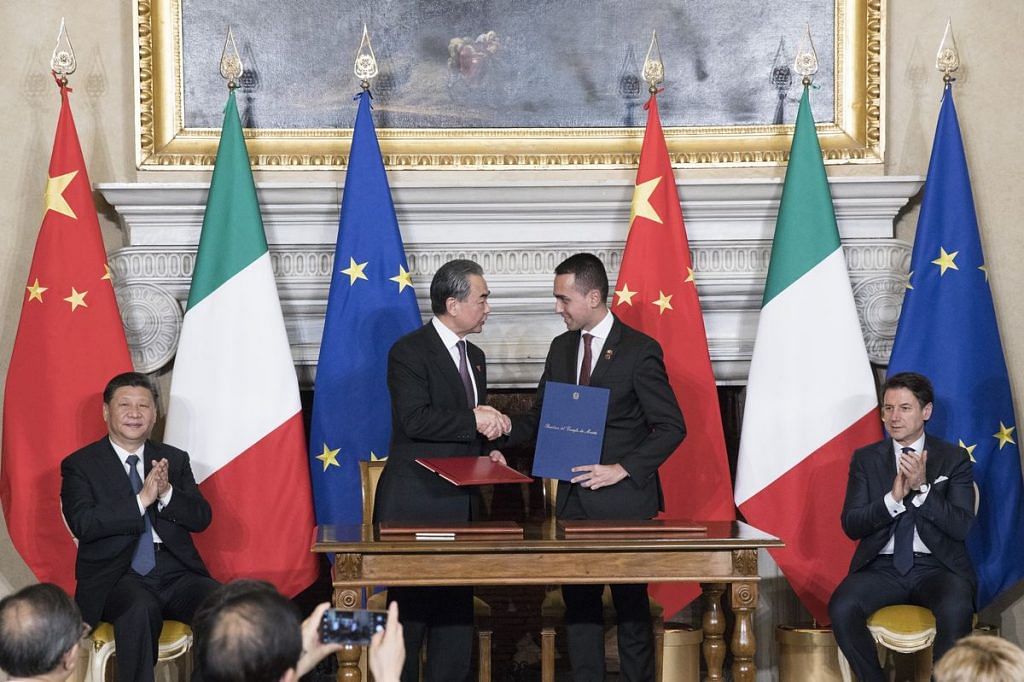Detractors of China’s ambitious Belt and Road Initiative see it either as a debt trap or a threat to sovereignty of other countries.
The recently-concluded BRI summit in Beijing tried assuaging these fears and re-launched the project, with an emphasis on respect for sovereignty, “extensive consultations” and “shared mutual benefits”.
But both arguments against the BRI by the detractors are limiting as well as misleading.
Look beyond debt traps
The most common criticism against China’s Belt and Road Initiative (BRI) is that it pushes countries into debt traps. The argument is that Beijing issues expensive loans to host countries and when they are unable to pay back these loans (as expected), the former steps in with a debt-equity swap. This is how Beijing, say critics, takes control of specific assets in strategically located countries.
Also read: How China is defending its detention of Muslims to the world while selling the BRI dream
The fundamental problem with this claim is that there is scant evidence to back it. Sri Lanka’s Hambantota port seems to be the only example, which adheres to the logic of a debt trap. A recent report by a consultancy, the Rhodium Group, looked at 38 cases of BRI debt renegotiations and found that most were resolved in favour of the borrowers. In addition, debt had been written off on 14 occasions.
This is not to say that BRI cannot generate debt problems for some countries. A report by the Centre for Global Development, a US-based think tank, shows that eight of the 68 potential BRI borrowers could face serious challenges in repaying their loans.
But the debt trap argument currently overlooks a range of short to medium-term economic problems that BRI creates for the host countries, such as acute fiscal issues, balance of payments crises, and a dramatic fall in foreign reserves.
For instance, let’s look at the China-Pakistan Economic Corridor (CPEC) – a showcase project of the BRI – and its effect on Pakistan’s economy. The massive amount of debt repayment is the main reason for the country’s ever-widening fiscal deficit. Pakistan’s recent balance of payments crisis was also primarily caused by the project. Under CPEC, Pakistan was forced to import a lot of capital goods from China that exhausted its already meagre foreign reserves.
BRI projects are cut-off from local economic and developmental needs of the host country. A recent report by the Centre for a New American Security, a US-based think tank, notes: “Belt and Road projects often involve the use of Chinese firms and labor for construction, which does little to transfer skills to local workers, and sometimes involve inequitable profit-sharing arrangements.”
The term debt trap fails to explain the overall macroeconomic ill effects of BRI-led investments on smaller economies. The problem isn’t that China will acquire key assets in these countries, but that BRI has the capacity to ruin these economies.
Gains for the global economy
If one looks beyond BRI’s effect in specific countries, there is evidence to suggest that the Chinese project may have a positive impact on the global economy as a whole.
Also read: China’s BRI begins to faces resistance from Pakistan, Sri Lanka & Nepal
A study by World Bank researchers argues that the project will have a positive effect on the world economy as it will reduce the costs of trade. Thanks to the ongoing infrastructure projects, BRI countries will see a reduction in shipment time by 3.2 per cent with the rest of the world and 4 per cent with other BRI countries – this will lead to a considerable drop in trade costs.
The report also notes that if complementary policy reforms are initiated, it can lead to a further drop in shipment time and trade costs.
Beyond the macro effects, the dramatic economic revival of the Piraeus port in Greece highlights how deft use of Chinese investment can result in huge economic gains for the host economy.
The port’s two docks were initially leased out to Chinese shipping company COSCO in 2010; in 2016, the company bought majority stake in the port.
And in just eight years, Piraeus has jumped from 93rd to 38th largest port in the world. Today, it is fastest growing port in the world.
It’s not China’s Marshall Plan
Many scholars and experts tend to look at BRI as China’s Marshall Plan. The Marshall Plan was America’s post-war strategy whereby it extended economic assistance to war-torn allies and helped them develop. The US also extended help to former enemies such as Germany.
There is a fundamental reason why it’s misleading to consider BRI as China’s Marshall Plan. All the economies, which were assisted by the US, had already been major global powers in the past. The US just helped them regain that status.
The Chinese strategy, in contrast, seems to have two components.
On the one hand, we see China adopt a classic sphere of influence strategy, which is aimed at establishing the country as the predominant power in South East Asia and weakening America’s control over Latin America.
On the other hand, it is also working towards creating an alternative global order. China is assisting a lot of smaller and, some would argue, inconsequential powers in Africa and Latin America. The goal is not only to attain strong strategic leverage in these small countries, but also develop them as vital geo-strategic powers in the future.
Also read: Don’t panic yet, China’s Belt & Road project doesn’t mean it’ll boost Beijing’s power
In this sense, China seems to have adopted a new bottom-up strategy, which involves taking big risks but can also be equally rewarding. If China does succeed, it will end up creating a new, competing world order to that of the US.
